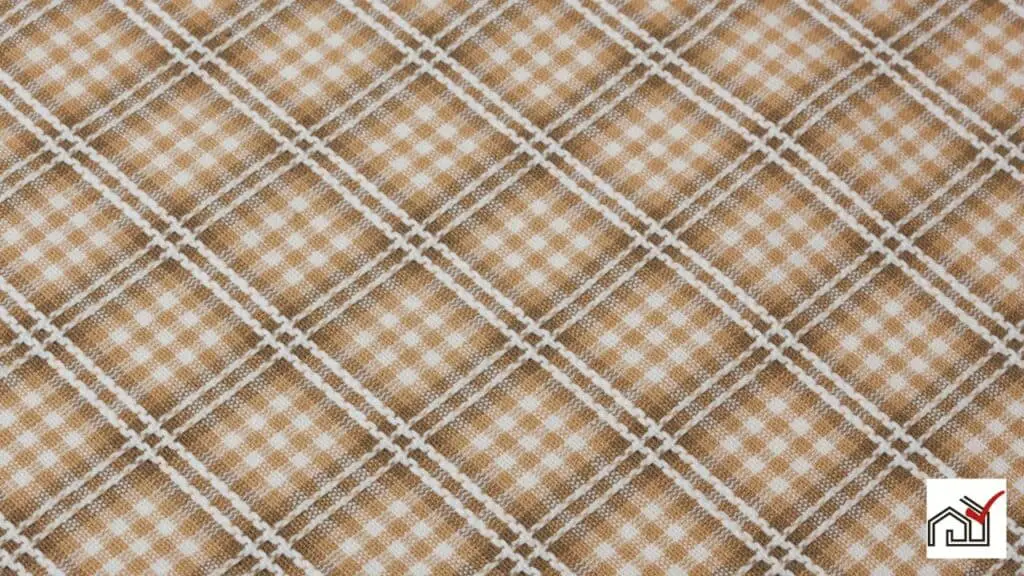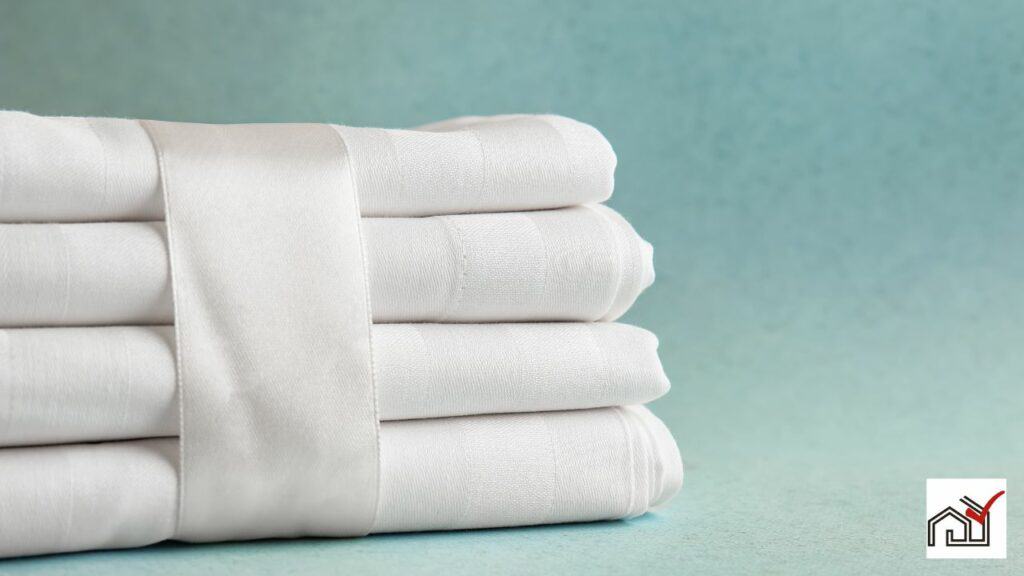Flannel sheets offer both advantages and disadvantages. They are soft and warm, ideal for cold weather, and are durable and easy to care for.
However, they may be too warm for hot climates and can shrink or pill if not washed properly. Style and color choices may be limited compared to other materials.
Consider these points before choosing flannel sheets.
Understanding Flannel Material
Flannel is a soft and warm fabric commonly used for bedding. It can be made from cotton, wool, or a mix of synthetic fibers. Cotton flannel is particularly popular for bed linens as it is durable, soft, and eco-friendly.
Flannel's weight varies, and it is measured in grams per square meter (GSM). The fabric has a napped surface which creates a fuzzy texture and traps air to keep warmth in. This napping process adds to the softness of the material.
Caring for flannel requires gentle handling to keep its softness and insulation. Using a fabric shaver can remove pills, but care must be taken not to harm the fabric. Hand washing without strong rubbing and drying away from direct heat helps maintain flannel's quality.
Flannel comes in various blends, affecting its breathability and ability to wick moisture. Despite the blend, it remains a preferred choice for comfortable and hypoallergenic bed linens.
Pros of Flannel Sheets
Flannel sheets are known for their warmth and softness, making them ideal for colder seasons. They trap heat effectively due to their napped texture. Typically made from 100% cotton, flannel sheets are soft and provide a comfortable sleeping surface.
The material of flannel sheets is brushed on both sides, which not only makes them softer but also increases their durability. They can last through multiple winters and resist pilling, maintaining their texture after many washes.
Flannel sheets absorb moisture and are breathable, helping to keep the sleeper dry and comfortable throughout the night. This is particularly helpful for those who sweat while sleeping.
These sheets come in various colors and patterns, allowing for easy coordination with bedroom decor. Choices include plaids and solid colors.
Flannel sheets are easy to care for. They can be machine washed and dried, and they often become softer with each wash. To ensure their longevity, it's important to follow the care instructions provided by the manufacturer.
Cons of Flannel Sheets
Flannel sheets may shrink and lose color after multiple washes. Cotton flannel is particularly prone to shrinking, which can lead to an inconsistent fit on the mattress. The colors of flannel sheets may fade or bleed if not washed properly, potentially staining other fabrics.
Pilling, the formation of small fiber balls, can occur on flannel sheets, making the texture less smooth. While fabric softener can mitigate pilling, the effect is often temporary. Low-quality flannel sheets or those not maintained well can feel rough.
Cotton-polyester blend flannel sheets are less likely to shrink but may not be as breathable as pure cotton, possibly causing discomfort. Dryer sheets can reduce static and maintain softness, but may leave a residue.
Heavy flannel sheets provide warmth but can be too insulating for some, leading to overheating during sleep. Sheets made with synthetic fibers may not be as comfortable or durable as those made from natural fibers, affecting the overall quality and lifespan of the bedding.
Flannel Sheet Maintenance
Maintain flannel sheets by washing and drying them correctly to preserve their comfort and durability. Flannel can be hand-washed or machine-washed. After washing, it is best to air dry flannel sheets to prevent damage from heat and sunlight.
When washing, use a gentle detergent and wash the sheets alone in lukewarm or cool water to avoid pilling. Adding fabric conditioner can help maintain the sheets' softness, particularly for cotton flannel.
If using a dryer for flannel sheets, select a low heat setting, especially for synthetic flannel, to reduce the risk of damage.
Wash flannel sheets every one to two weeks to keep them clean and fresh. Proper care will extend the life of your flannel sheets for many seasons.
Flannel Weight and Warmth
The weight of flannel sheets is important for warmth and insulation, making them suitable for cold climates. Flannel's weight is measured in ounces per square yard, and heavier flannel provides better insulation. Thicker flannel sheets retain body heat effectively, ensuring a warm sleeping environment.
The warmth of flannel sheets also comes from their material, typically cotton, which is brushed to create a soft surface that traps heat. This enhances the fabric's ability to keep a comfortable temperature during sleep.
Higher quality flannel sheets are heavier and last longer. They are less likely to form pills, which can reduce softness and insulation. A heavier, pill-resistant flannel sheet offers better comfort and durability.
In evaluating flannel sheets for warmth, consider the weight, material type, and how it's made. Quality flannel sheets that are brushed and pill-resistant are the warmest and most comfortable option for cold conditions.
Style and Design Options
Flannel sheets provide warmth and come in various styles to suit different bedroom decors. Plaid flannel sheets give a rustic feel, while solid colors and stripes offer a modern look. Flannel is available in many colors and patterns to fit any taste and complement existing decor.
These sheets are typically made from cotton or a cotton blend, combining durability with visual appeal. The raised texture of flannel adds depth to the design and feels soft, making the bed more inviting.
Flannel sheets can be a practical choice for adding both comfort and style to bedrooms, although they may have fewer pattern options compared to other materials.
Making the Right Choice
Choosing the right flannel sheets requires considering comfort, fabric quality, and durability. High-quality flannel sheets offer comfort and longevity. Look for cotton flannel sheets for their breathability and softness. Quality cotton flannel sheets are about 5 oz in weight and brushed on both sides for softness.
The origin of the cotton is important for texture and durability. Check the fabric weight in ounces per square yard; higher weights indicate better warmth and quality. Durable flannel sheets resist pilling and stay soft longer. Both-side brushing enhances softness and insulation.
Be cautious with micro flannel; it may be less durable and feel sticky compared to cotton.





